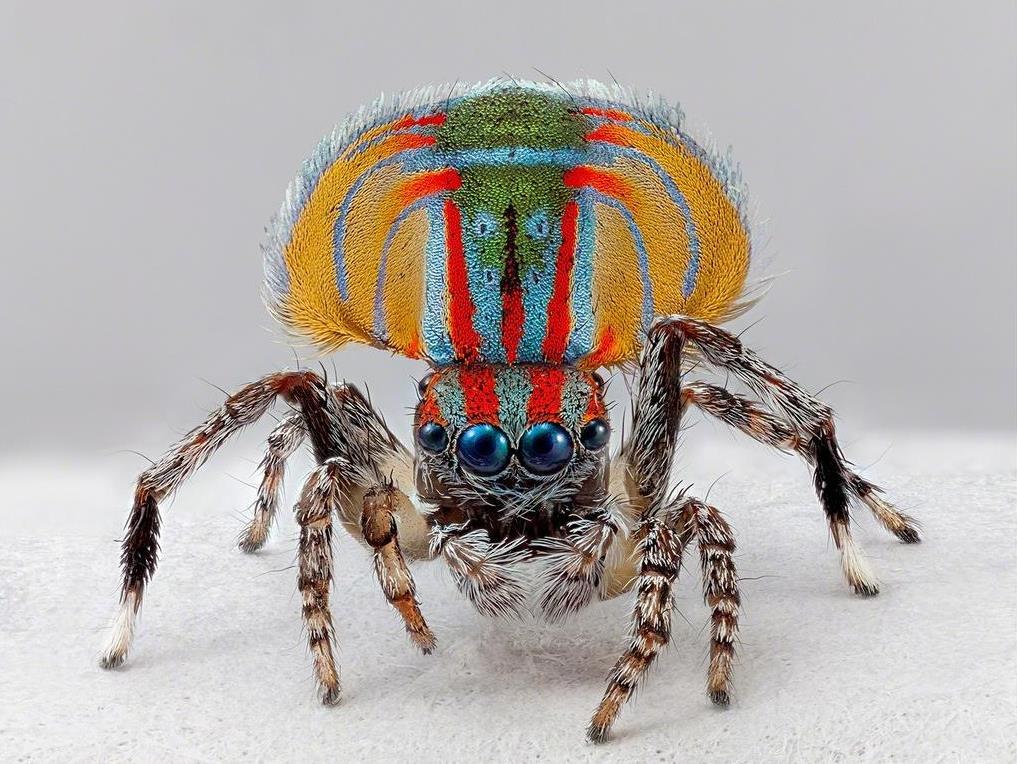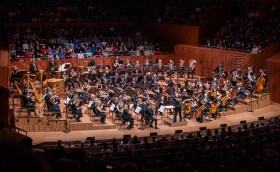Photo by Maria Fernanda Cardoso. Look at Me! I Am an Artist I, 2016. Pigment print on premium photo paper.
SITEWORKS is Bundanon’s annual spring event that brings scientists, artists and community voices together to share knowledge and ideas arising from the Bundanon sites through a series of discussions, presentations and experiences.
This year artists were asked to pitch ideas to create site-specific work in response to the theme MICRO – and the response was national.
Artists including Maria Fernanda Cardoso, Emily Hunt, Helen Pynor, Patrick Nolan with Dance North, One Step at a Time Like This, Theatre Kantanka and Deborah Kelly, among others, will come together with scientists and academics to develop work in close connection with one another.
This process will lead to a program of creative work and discussions on Saturday, 29 September, and invites visitors to camp overnight on the historic property.
‘It is a really lovely concentration of ideas and energies and art practices with a very particular outcome, which is to share it at the end with people who want to see what we’re up to,’ said Director Patrick Nolan, who is working with Dance North choreographers Amber Haines and Kyle Page to create Undergrowth – described as a choreography of the invisible that takes the insects and sounds within the soil or Bundanon itself as inspiration.
‘I’ve always really been inspired by SITEWORKS. I’ve worked quite a lot in outdoor performance in the past and I really like the way SITEWORKS is deeply connected to the land itself. The performance is very much drawn and driven by the geography and the landscape, and the history of the land. That is really key to site-specific work. That there is a resonance to the land itself and the history that has created that land,’ said Nolan.
Undergrowth poses some complicated questions: How do you generate a work that comes from something that is unseen? How do you embody the microscopic in dance? What is the music of dirt?
‘There’s a lot to be explored in relation to that tension between what happens to a dancer when they are asked to move in such a way that you cannot tell they’re moving – how does that work? But then on the other end of the scale, what we want to actually do is explore quite grand movements by placing the audience so far away from the performance that the performance becomes micro because of the distance between,’ said Nolan.
‘The beauty of SITEWORKS is that you have this enormous scale to work in the landscape. You can place the performer and audience at great distances.’
Maria Fernanda Cardoso has also drawn inspiration from the ground for her work Dancing with Spiders: On the Origins of Art III-VIII. Focusing on the minuscule species of Maratus jumping spiders that are barely visible to the naked eye – also known as Peacock Spiders due to the males colourful peacock-like fans – Cardoso has collaborated with sound artist Andrew Belletty to create an experience that allows audiences to experience the species’ intriguing dance of courtship.
‘In the dance [the male and female spiders] look at each other and the males vibrate the abdomen. The female also waves her abdomen and then the male displays his colourful fan, opens his fan to display it and waves his arms and they gesture. I have filmed eight different species and each species has different colours, patterns and different style of movement. They have different hand and face gestures,’ she explained.
Filmed with micro cinematography, the footage will be projected on large screens surrounding platforms that simulate the same vibrations experienced by the spiders during the dance.
‘Those vibrations we observe through the dance travel through the ground and are felt through the feet of the spiders. We recorded this sound from the spiders and Andrew Belletty worked it so it was realistic and we built these three platforms where you stand on them, watch the video and at the same time feel the vibrations of the sound that the spiders make,’ said Cardoso.
‘I think experiencing it outdoors [at Bundanon], that is a magical part of it. it is not a box inside a building where you perceive nature, this will be outside, closer to how spiders feel.’
Program highlights
- Maria Fernanda Cardoso – On the origin of art brings the world of the tiny peacock spider into focus
- Emily Hunt – a microcosmic fantasy world
- Patrick Nolan with Dance North – seven dancers perform a choreography of the invisible – a performance that reveals the thriving worlds that exist in the dirt beneath our feet.
- French and Mottershead – lie beneath the trees and fade into the forest floor as you’re slowly and gently subsumed by the earth over thousands of years through this visually evocative audio work.
- Deborah Kelly – A pantheon of fleeting deity-creatures, The Gods of Tiny Things will haunt the natural amphitheatre.
- Alan Schacher – in Sweet Separation Turkish sugar cubes are used to construct a vision of the bitter-sweet, tiny walls that divide artist from public.
- Alex Torney – The Model Raveway is a miniature representation of the difficulties young people in regional areas face when trying to access culture.
- Stories and Structures – an exhibition that explores the rich visual parallels between the representations seen in many Indigenous artworks and the microscopic structures hidden in the natural world, reveal unexpected and intriguing similaritie
Master of ceremonies, ABC broadcaster Robbie Buck, will keep the conversation flowing with a series of talks with leading academics, miniaturists and microbiologists discussing all things MICRO.
Scientists and speakers include:
- Miles Merrill from Word Travels talks with Cambewarra Public School students about big ethical issues.
- Michael Kuiper is a computational biomolecular modeller from the CSIRO, specialising in molecular simulation and visualisation of proteins.
- Simon Mattsson, a farmer from north Queensland, talks about how the awareness of soil microbiology and plant diversity can maintain soil health
- Zenobia Jacobs is an archaeologist from Wollongong University who dates geological and archaeological sites from grains of sand.
- Anna-Maria Sviatko, creator of modern dolls’ house miniature scenes, will share the joys and challenges of mirroring full-size life in miniature.
- Andrew Holmes from Sydney University is a microbial ecologist interested in human gut microbiota, with a wonderful poo collection in his freezer.
- Curator Jenny Whiting and Aboriginal artist Graham Toomey talk about the parallels between microscopy images and Indigenous art.
SITEWORKS is on Saturday 29 September, 12pm until late at Bundanon Trust. For visitors camping overnight, site closes mid-morning Sunday. Bundanon is located 30 minutes from Berry, NSW.
Entry: $12 full, $8 concession, children under 16 free. Camping: $10 per person





